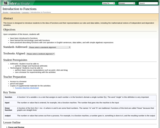
This lesson introduces students to functions and how they are represented as rules and data tables. They also learn about dependent and independent variables.
- Provider:
- Interactive
- Date Added:
- 06/22/2022
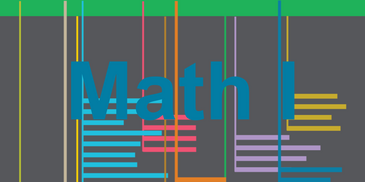
This collection contains highly recommended Secondary Mathematics I lessons, activities, and other resources from the eMedia library.

This lesson introduces students to functions and how they are represented as rules and data tables. They also learn about dependent and independent variables.

TuvaLabs Data Stories provide resources for teachers to engage students in rich discourse about an interesting topic and then allows students to come to conclusions using mathematical reasoning and tools.

TuvaLabs Data Stories provide resources for teachers to engage students in rich discourse about an interesting topic and then allows students to come to conclusions using mathematical reasoning and tools.

Organizing international meetings is not easy in many ways, including the problem that some of the participants may experience the effects of jet lag after recent travel from their home country to the meeting location which may be in a different time-zone, or in a different climate and time of year, and so on. All these things may dramatically affect the productivity of the meeting.
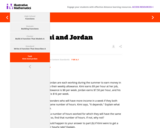
In the middle grades, students have lots of experience analyzing and comparing linear functions using graphs, tables, symbolic expressions, and verbal descriptions. In this task, students may choose a representation that suits them and then reason from within that representation. When used in instruction, this task provides opportunities to compare representations and to make connections among them.
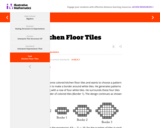
The purpose of this task is to give students practice in reading, analyzing, and constructing algebraic expressions, attending to the relationship between the form of an expression and the context from which it arises.
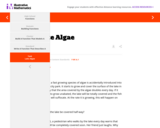
The purpose of this task is to introduce students to exponential growth. While the context presents a classic example of exponential growth, it approaches it from a non-standard point of view. Instead of giving a starting value and asking for subsequent values, it gives an end value and asks about what happened in the past.

This task asks students to describe features of a graph. It provides an opportunity to introduce (or use) mathematical terminology that makes communication easier and more precise, such as: periodic behavior, maxima, minima, outliers, increasing, decreasing, slope.

This task uses a situation that is familiar to students to solve a problem they probably have all encountered before: How long will it take until an electronic device has a fully charged battery? A linear model can be used to solve this problem. The task combines ideas from statistics, functions and modeling. It is a nice combination of ideas in different domains in the high school curriculum.
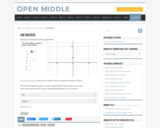
Open Middle provides math problems that have a closed beginning, a closed end, and an open middle. This means that there are multiple ways to approach and ultimately solve the problems. Open middle problems generally require a higher Depth of Knowledge than most problems that assess procedural and conceptual understanding.

After completing this tutorial, you should be able to:
Know what a linear equation is.
Know if a value is a solution or not.
Use the addition, subtraction, multiplication, and division properties of equalities to solve linear equations.
Know when an equation has no solution.
Know when an equation has all real numbers as a solution.
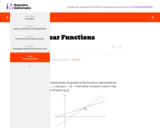
This task requires students to use the fact that on the graph of the linear function h(x)=ax+b, the y-coordinate increases by a when x increases by one. Specific values for a and b were left out intentionally to encourage students to use the above fact as opposed to computing the point of intersection, (p,q), and then computing respective function values to answer the question.

The applet in this lesson allows students to manipulate variables and see the changes in the graphed line.
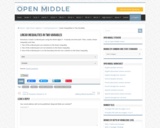
Open Middle provides math problems that have a closed beginning, a closed end, and an open middle. This means that there are multiple ways to approach and ultimately solve the problems. Open middle problems generally require a higher Depth of Knowledge than most problems that assess procedural and conceptual understanding.

This task gives a variet of real-life contexts which could be modeled by a linear or exponential function. The key distinguishing feature between the two is whether the change by equal factors over equal intervals (exponential functions), or by a constant increase per unit interval (linear functions). The task could either be used as an assessment problem on this distinction, or used as an introduction to the differences between these very important classes of functions.
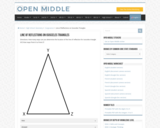
Open Middle provides math problems that have a closed beginning, a closed end, and an open middle. This means that there are multiple ways to approach and ultimately solve the problems. Open middle problems generally require a higher Depth of Knowledge than most problems that assess procedural and conceptual understanding.
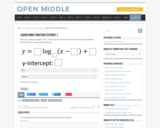
Open Middle provides math problems that have a closed beginning, a closed end, and an open middle. This means that there are multiple ways to approach and ultimately solve the problems. Open middle problems generally require a higher Depth of Knowledge than most problems that assess procedural and conceptual understanding.

Open Middle provides math problems that have a closed beginning, a closed end, and an open middle. This means that there are multiple ways to approach and ultimately solve the problems. Open middle problems generally require a higher Depth of Knowledge than most problems that assess procedural and conceptual understanding.
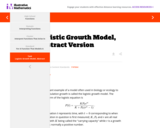
This task is for instructional purposes only and students should already be familiar with some specific examples of logistic growth functions such as that given in ''Logistic growth model, concrete case.''
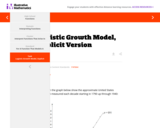
This problem introduces a logistic growth model in the concrete setting of estimating the population of the U.S.